Virtual Open Systems Newsletter
In this edition, Virtual Open Systems highlights some of its most recent virtualization activities related to its mixed-criticality software products to strengthen its virtualization offer for automotive, IoT industrial, Edge & Cloud computing, virtualized media box and much more. In addition, the most recent news about the company dissemination are described, together with its latest research and innovation projects news and success stories in virtualization of FPGA Accelerators and API-remoting applied to machine learning API for massive data structures.
- Product release: VOSySmonitor v3.1.0 - Multiple Secure OS support
- Mixed-criticality done right: VOSySmonitor on Mediatek MT2712 enables hypervisor-less automotive eCockpit
- Success story: Virtualization of a media box software stack on ARMv8 to lower TCO
- FPGA framework showcased: Virtualizing FPGA Accelerators boosts video streaming
- Success story: Virtualizing customer API speeds up ML in massive data structures
- Next generation HPC: ExaNeSt and ExaNoDe european projects show significant results
Enabling safety functional virtualization in Automotive, IoT Edge, Industry-4.0,

Virtual Open Systems announces the new release v3.1.0 of its VOSySmonitor virtualization product powering mixed-critical systems. VOSySmonitor is an ISO 26262 ASIL C certified safety-critical system partitioner built on ARM TrustZone that enables the concurrent execution of multiple operating systems with different levels of criticality. The innovative VOSySmonitor architecture splits the system in two main compartments, one for the safety critical and the other for standard applications, isolating them with the use of Arm TrustZone. VOSySmonitor v3.1.0 has been enhanced with a main feature, which enables customers to co-execute multiple Operating Systems in the Secure world without compromising the responsiveness of critical real-time applications. As a matter of fact, VOSySmonitor is now capable to safely and efficiently co-execute one or more Safety critical RTOS with a Trusted Execution Environment (TEE) in the Secure world, while a General Purpose Operating Systems (GPOS), such as Linux, Android, Linux-KVM or any other OS, is executing in the Normal world. Last but not least, the has been updated accordingly in order to enable users to configure the scheduling of multiple Secure OSs depending on custom needs. VOSySmonitor is ideal to simplify complexity while maximize execution efficiency in many market segments, spanning from automotive to embedded.
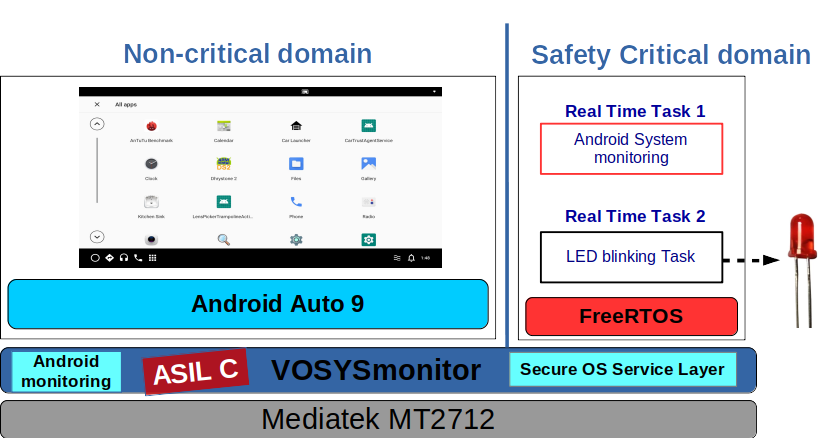
Virtual Open Systems is glad to inform that VOSySmonitor (its ISO 26262 ASIL C certified ARM TrustZone-based virtualization product) has been ported on the Mediatek MT2712 platform (Autus I20 - 2 Cortex-A72 and 4 Cortex-A35), a high performance, hexa-core System-on-Chip (SoC) for running rich In-Vehicle Infotainment (IVI) and cluster systems across multiple displays. A VOSySmonitor use-case example, where an IVI system (Android Auto 9) and a safety critical Real-Time Operating System (FreeRTOS) are executed on a Mediatek MT2712 platform, has been demonstrated in order to highlight the VOSySmonitor high performance as well as the freedom from interference between the Safety critical RTOS and Android Auto 9. Such application example proves that VOSySmonitor is the perfect solution for enabling the next generation of , where vehicle information, entertainment, navigation, camera/video and device connectivity are being combined into displays, thus heavily simplifying the system electronic design avoiding the usage of expensive traditional type-1 hypervisors, which depend also on cumbersome business models.
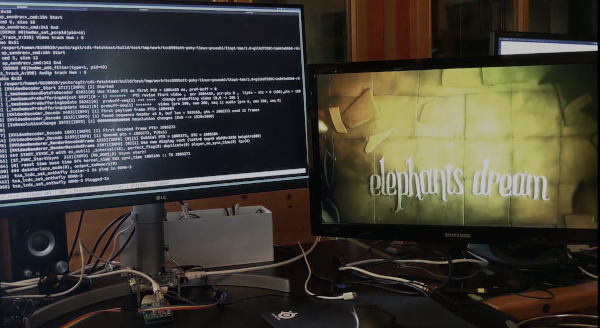
Virtual Open Systems has enabled the abstraction of a complete MultiMedia Box (MMB) software stack by implementing a virtualization layer based on KVM and QEMU. Moving MMB core functionalities within Virtual Machines (VMs) greatly improves the maintainability of the system, simplifies its future migration to new hardware platforms, thus lowering the total cost of production and ownership (TCP, TCO), the cost of maintenance and software updates, while enhancing the overall security. This work has been realized with the pass-through of various devices (such as display, scalers, mixer, etc.) and several improvements to both QEMU and KVM to overcome some limitations of the respective upstream projects, thus confirming the first-in-class know-how of the company in the field. Overall, the performance of the guest system are outstanding with a negligible overhead, being able to:
- Decode 4K video content from media files
- Decode 4K video streaming from a satellite DVB-S tuner
- Decode 4K video streaming from YouTube
- Run 3D OpenGL benchmarks
The results of this work of mediabox virtualization are a clear indication that virtualization is becoming a key technology to enhance the competitiveness in every market segment, as confirmed in this very demanding use case related to the decoding a 4K VoD stream.
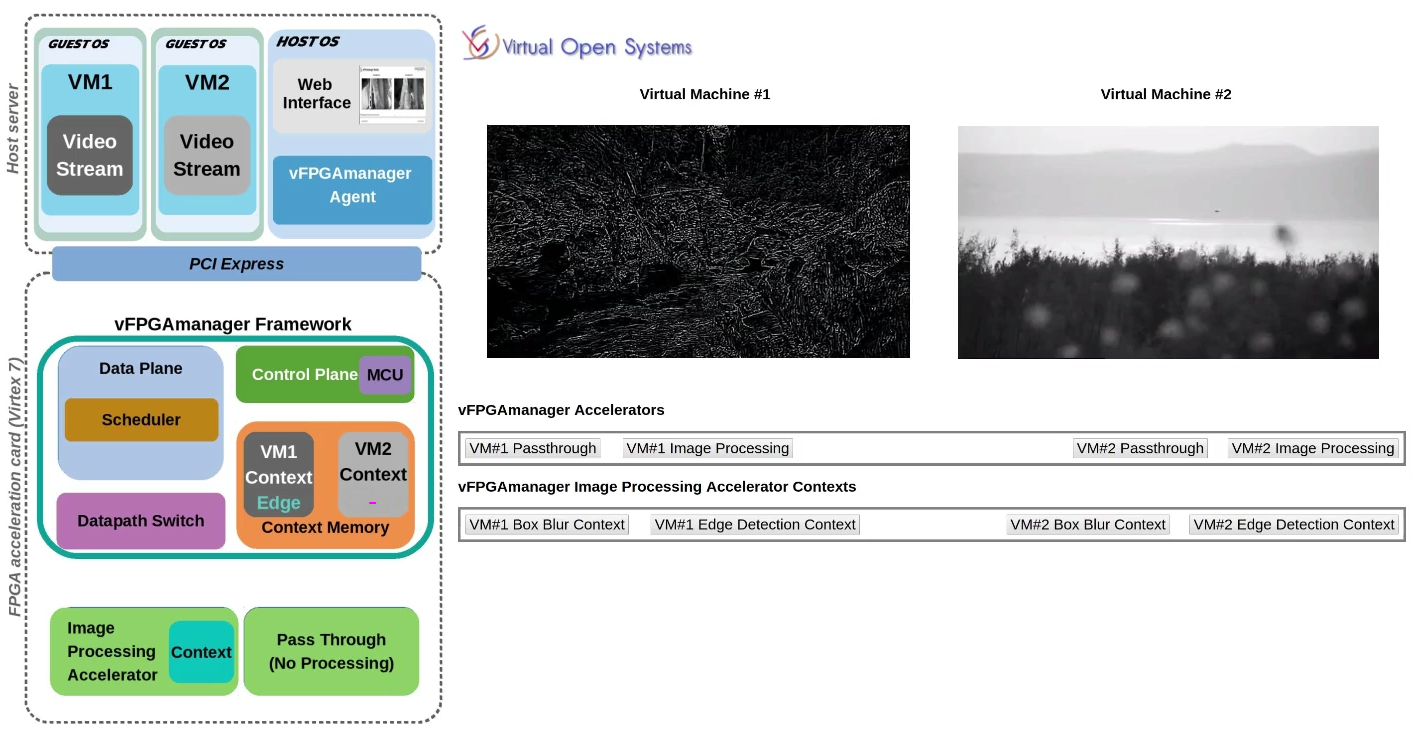
Video streaming is today very popular. The higher is the number of users connected and the more hardware resources are requested to provide the right level of service. With the release of a new video demo on the company website related to the virtualization and control of FPGA accelerators, Virtual Open Systems demonstrates how to address the video streaming challenges using FPGAs and in particular leveraging on the vFPGA manager product. The vFPGAmanager dynamic remapping, accelerators sharing and configuration are used to efficiently enable guests to the FPGA. vFPGA manager supports both container, unikernels and virtual machines and addresses the performance requirements of the High Performance Computing, SDN/NFV and cloud infrastructure markets.
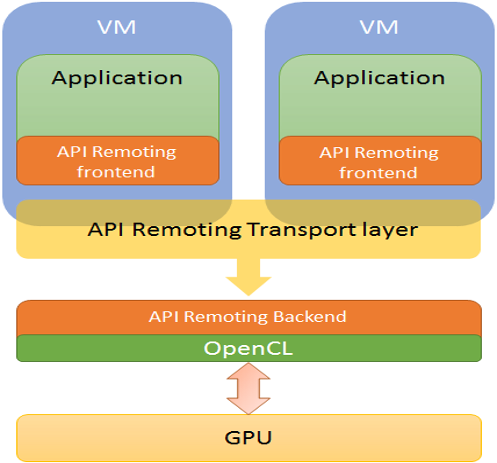
Virtual Open Systems has realized the development of an API remoting solution to virtualize an optical accelerator for machine learning in a production server context. The API remoting implementation is based on |VOSySremote API remoting framework|, the Virtual Open Systems product that enables API virtualization for containers and virtual machines on Arm and x86 processors. Thanks to VOSySremote, any API or library can be virtualized achieving highest performance by using shared memory mechanisms between guests and host; this is a suitable technology in many market segment such as Industrial IoT, automotive, HPC, media gateways, set-top-box, etc.

Virtual Open Systems has successfully contributed in two European HPC projects, ExaNeSt and ExaNoDe, whose results have been showcased in Heraklion respectively on the 23rd and 26th July, 2019. For each project, Virtual Open Systems has exposed the results of its development activities, of which Virtual Open Systems is proud; in ExaNoDe, the checkpointing technology has been enhanced to provide incremental periodic checkpointing; this technology, coupled with the state-of-the-art solutions available for virtual machines orchestration (e.g., Openstack), is a definitive solution to provide a reliable cloud infrastructure to become resilient to critical events that otherwise would compromise the whole HPC system. In addition still in ExaNoDe, Virtual Open Systems developed a remoting solutions based on VOSySremote API remoting framework for HPC accelerators API, notably, for the OpenCL API; a technology which is deployed in customer use-cases in various market segments.
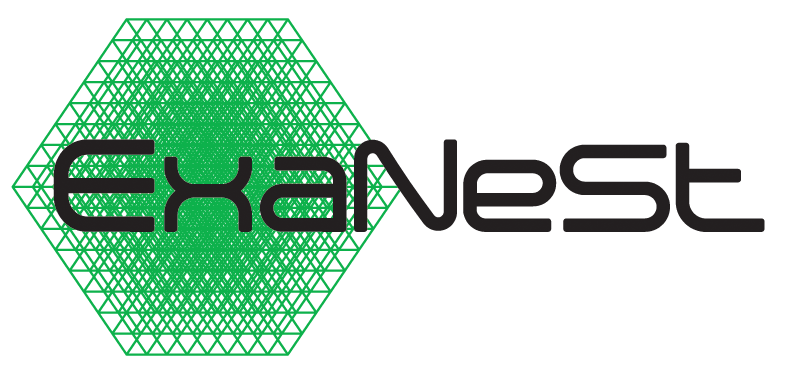
In ExaNeSt, Virtual Open Systems gas developed a virtualization solution for API implementing RDMA, thus allowing the virtual machines to exploit the underlying hardware support, like the global address space implemented by UNIMEM. Overall, the work done in API remoting is a fundamental step towards the concept of a "virtual compute node" (i.e., a compute node implemented as a virtual machine with all the hardware resources being abstracted). Still in ExaNeSt, Virtual Open Systems has integrated its networking software switch, VOSySwitch, into Openstack and enhanced its core functionalities to support multiple cores/threads of the host system. The results of both projects are disseminated through .
- Newsletter 2013 09
- Newsletter 2014 03
- Newsletter 2014 09
- Newsletter 2015 03
- Newsletter 2016 03
- Newsletter 2015 09
- Newsletter 2017 09
- Newsletter 2016 09
- Newsletter 2017 03
- Newsletter 2020 09
- Newsletter 2018 03
- Newsletter 2018 09
- Newsletter 2019 03
- Newsletter 2020 03
- Newsletter 2020 09 jp 日本語
- Newsletter 2022 09
- Newsletter 2021 03
- Newsletter 2023 12
- Newsletter 2021 03 jp 日本語
- Newsletter 2021 09
- Newsletter 2021 09 jp 日本語
- Newsletter 2022 03
- Newsletter 2024 06
- Newsletter 2022 09 jp 日本語

 VOSySofficial
VOSySofficial




